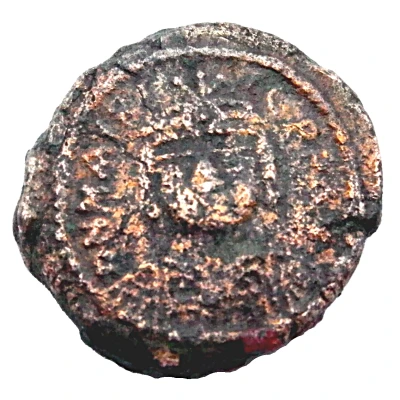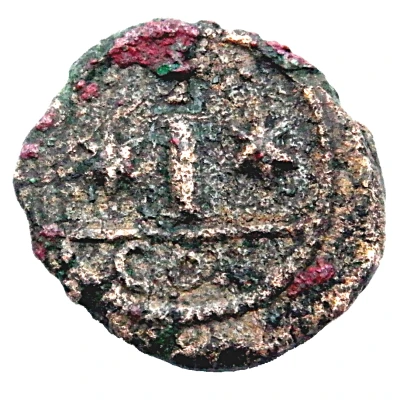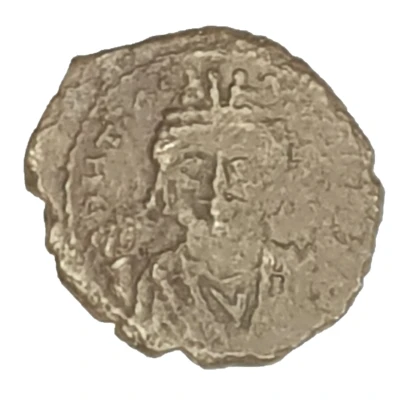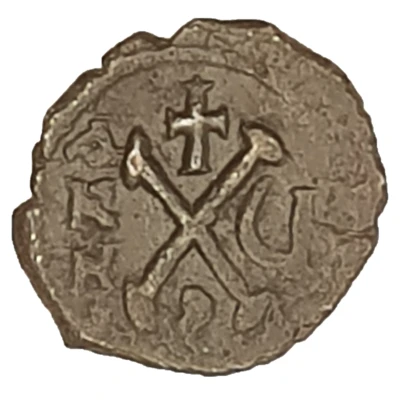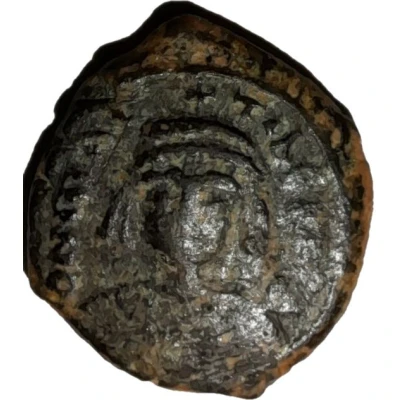
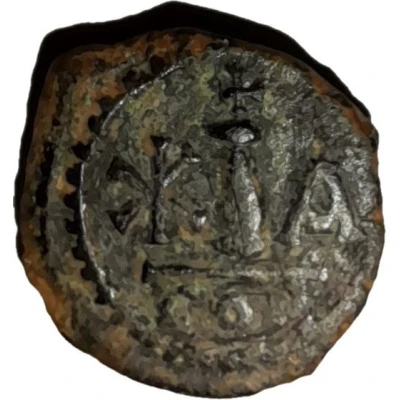

© pimmy (CC BY-NC-SA)
10 Nummi - Mauricius Tiberius Constantinople ND
| Bronze | 3.7 g | 19 mm |
| Issuer | Byzantine Empire (Byzantine states) |
|---|---|
| Emperor | Maurice (582-602) |
| Type | Standard circulation coin |
| Years | 585-586 |
| Value | 10 Nummi = 1 Decanummium = ¼ Follis (1⁄1152) |
| Currency | First Solidus Nomisma (498-720) |
| Composition | Bronze |
| Weight | 3.7 g |
| Diameter | 19 mm |
| Shape | Round (irregular) |
| Technique | Hammered |
| Demonetized | Yes |
| Updated | 2024-10-04 |
| Numista | N#348660 |
|---|---|
| Rarity index | 92% |
Reverse
Denomination (large letter Ⲓ), cross above
star to the left, officina to the right
Script: Latin
Lettering: CON
Unabridged legend: Constantinople
Translation: Possible officinae: A, B, Γ, Δ, ϵ
Comment
Maurice Tiberius(13/08/582-22/11/602)
Maurice succeeded his stepfather Tiberius II. After great victories over the Sassanids, he wiped many setbacks in the Balkans and could not prevent the installation of Slavs and Avars. A military plot overthrew 602. He was killed while trying to flee from Chosroes II.
Interesting fact
One interesting fact about the 10 Nummi coin featuring Mauricius Tiberius from the Byzantine Empire is that it was part of a significant monetary reform implemented by Emperor Maurice in the late 6th century. The reform aimed to address the empire's financial crisis by introducing a new coinage system based on the nummus, a bronze coin that replaced the older copper coins. The 10 Nummi coin was one of the denominations introduced during this reform, and it remained in circulation until the early 7th century.
